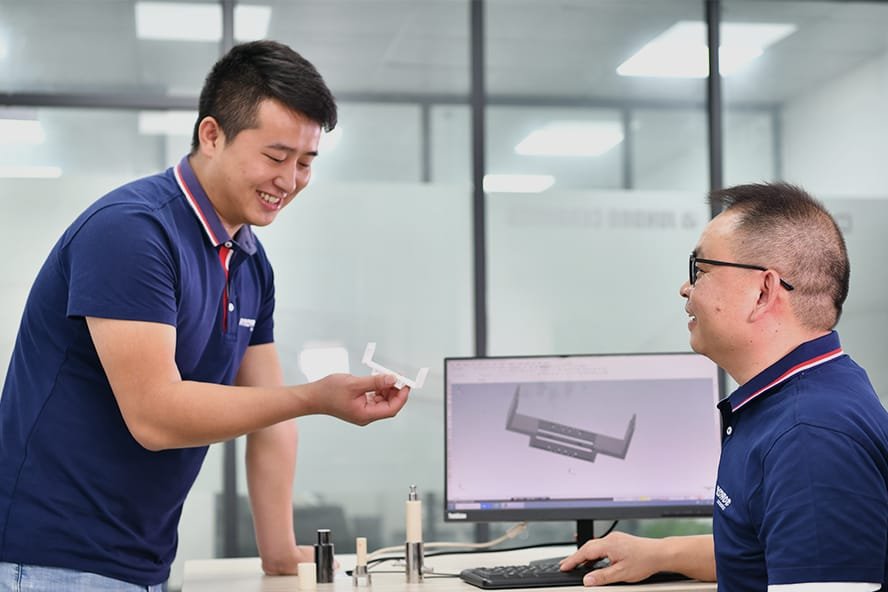A Comprehensive Guide to Macor Ceramics: Machining, Manufacturing
Costs and Applications

Introduction
Macor is a machinable glass-ceramic material known for its excellent thermal, electrical and mechanical properties, as well as excellent processing performance. Developed by Corning Inc., Macor has been widely used in a variety of fields such as aerospace, electronics, and industrial equipment, especially for extreme environments that require high-precision parts. Unlike most ceramic materials, Macor can be processed into complex shapes using traditional tools, making it an ideal choice that can bring efficiency and precision in a variety of applications.
Unique performance
- Excellent Machinability: Unlike most ceramic materials that require special equipment, Macor can be turned, milled, drilled and polished with conventional metalworking tools, making it efficient and economical to produce.
- Excellent Thermal Stability: Macor has a thermal expansion coefficient similar to that of metals, which can effectively cope with stress in high temperature environments.
- Electrical Insulation: Macor has very low electrical conductivity, making it ideal for electrical insulation devices.
- Strength and Durability: Macor has very high compressive and flexural strengths, which can maintain a long service life even in environments with high mechanical stress
- Chemical Corrosion Resistance: Macor has a strong tolerance to a variety of chemicals, which allows it to work stably in some chemically harsh environments.
Main Properties of Macor Ceramics
Before discussing the processing methods and applications of Macor ceramics in detail, let us first understand its main performance characteristics.
Macor Ceramic Machining
One of the biggest advantages of Macor ceramics is their machinability. Compared with other ceramic materials, Macor ceramics cause less wear on tools during machining, so they can be made into various complex shapes using conventional metal machining tools. Specific processing methods include:
- Milling
- Drilling
- Grinding
- Cutting
- Polishing

Precautions During Machining
Although the above five methods can be used to process complex and precise macor components, the following points still need to be considered in order to ensure processing accuracy and material performance:
- Use of coolant:Coolant should be used during processing to prevent thermal stress or cracks in the material due to excessive temperature.
- Tool selection:In order to extend tool life, it is recommended to use carbide tools for milling and drilling.
- Processing speed and feed rate:It is very important to maintain moderate processing speed and feed rate. Too high processing speed will cause increased tool wear, while too low speed may cause increased surface roughness.
Macor Ceramic Application
We all know that macor is a material with unique properties, so it is widely used.
Aerospace
Macor is used in components of spacecraft such as brackets, insulators, retaining rings, etc. Its excellent high temperature stability and mechanical strength enable it to work reliably under extreme temperatures and pressures.
Electronics Industry
Due to its excellent electrical insulation properties, Macor is used in the electronics industry as electrical insulation components such as capacitors and transistor supports.
Medical devices
Macor is used in the medical field to manufacture some precision parts, such as sensors and diagnostic equipment, due to its good biocompatibility and processing performance.
Semiconductor Industry
Macor is commonly used in semiconductor manufacturing as a component of wafer holders, electrical insulators, and other high-precision equipment
Optical applications
Since Macor can be easily processed into complex shapes, it is widely used in the optical field to make precision components such as lens holders and optical reflectors.
Vacuum Technology
Macor’s low outgassing and high thermal stability make it an ideal material for vacuum equipment such as vacuum chamber seals, vacuum gauges, etc.
Macor's Manufacturing Process
The manufacturing process of Macor starts with the preparation of raw materials, followed by crystallization to produce a processable glass-ceramic material. The specific steps are as follows:
- Batching: Raw materials (such as silicon dioxide, boron oxide, etc.) are mixed in proportion to form a basic glass formula.
- Forming and shaping: The mixed glass material is molded or poured to form a preliminary shape.
- Crystallization: The material is crystallized at high temperature to form a unique crystal structure, giving Macor high strength and high temperature resistance.
- Machining: Once crystallization is completed, Macor can undergo various machining processes, including turning, milling, drilling, grinding, etc.
- Finishing: The finished Macor may require further surface treatment or polishing to achieve the accuracy and surface finish required by the application.
Macor Ceramic Manufacturer
Choosing a suitable and capable manufacturer is crucial. Jundro Ceramics is a high-quality macor ceramic processing manufacturer that provides macor ceramic customization in multiple sizes, shapes and a range of surface finishes to perfectly fit your equipment and specific needs. You can seek expert help through the button below. We will be happy to serve you.
